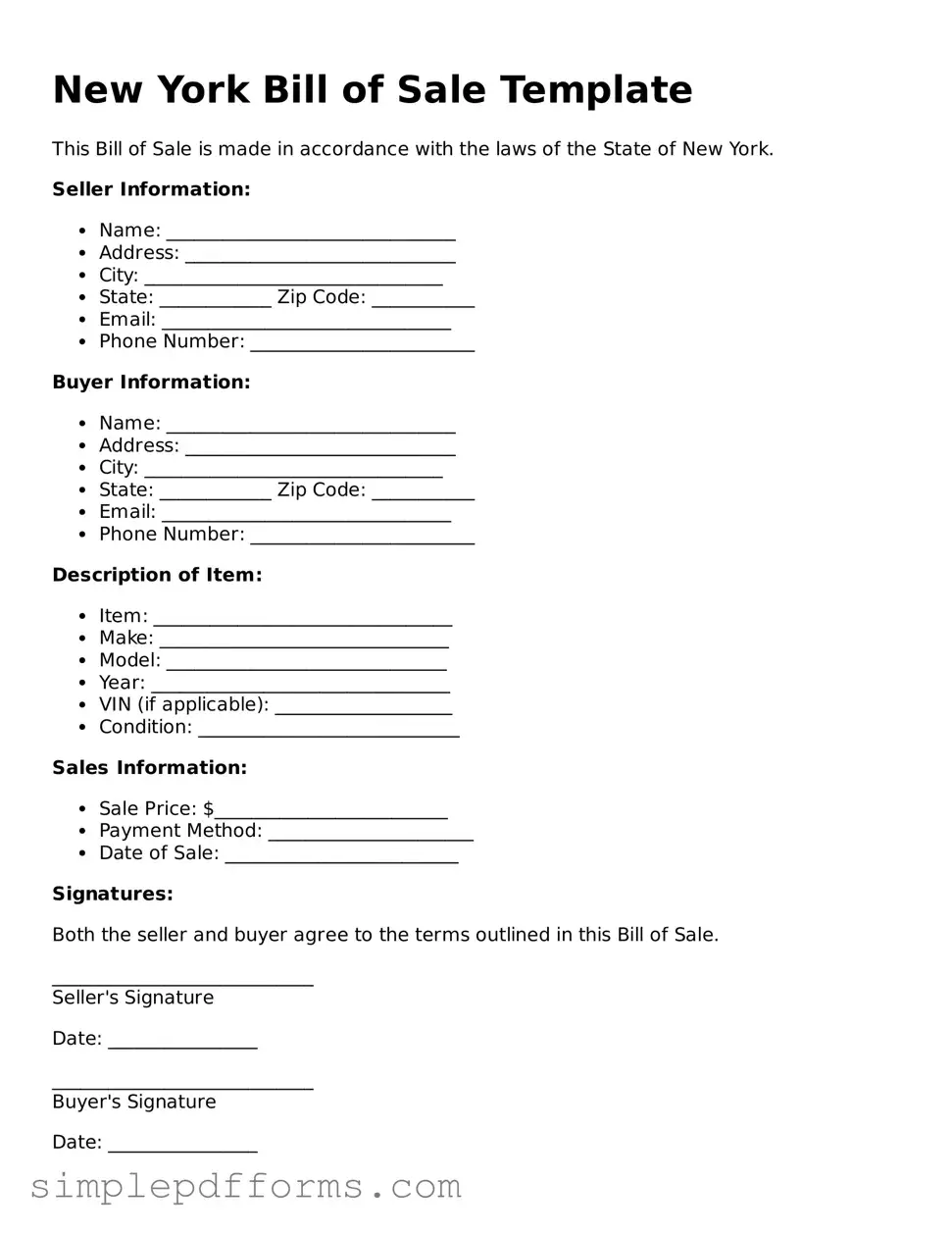Filling out a Bill of Sale form in New York can seem straightforward, but many people make common mistakes that can lead to complications down the line. One frequent error is failing to include all necessary information. The form requires specific details about the buyer, seller, and the item being sold. Omitting even one piece of information can render the document incomplete.
Another common mistake is not providing accurate descriptions of the item. When describing the item being sold, it is important to include details such as the make, model, year, and any identifying numbers, like a Vehicle Identification Number (VIN) for cars. Vague descriptions can lead to misunderstandings between the buyer and seller.
Many individuals also overlook the importance of signatures. Both the buyer and seller must sign the Bill of Sale for it to be valid. Failing to obtain the necessary signatures can create issues if disputes arise later. Additionally, some people forget to date the document, which is crucial for establishing when the transaction took place.
Another mistake occurs when individuals do not check for typos or errors. Simple mistakes in names, addresses, or item descriptions can cause confusion. It is advisable to review the document carefully before finalizing it to ensure all information is accurate.
Not understanding the implications of the Bill of Sale is another issue. Some people think that a Bill of Sale is just a formality, but it serves as a legal record of the transaction. It can protect both parties in case of disputes, so it is important to treat it seriously.
Additionally, some individuals may not realize that a Bill of Sale should be kept in a safe place after the transaction. Losing this document can lead to complications if the buyer needs to prove ownership or if the seller needs to demonstrate that the item was sold.
Another mistake is not considering local regulations. While New York has specific requirements for a Bill of Sale, local jurisdictions may have additional rules. It is essential to be aware of these local laws to ensure compliance.
Some people also fail to provide a copy of the Bill of Sale to the other party involved in the transaction. Both the buyer and seller should retain a copy for their records. This helps prevent future disputes and provides proof of the transaction.
Finally, individuals sometimes neglect to verify the identity of the other party. Ensuring that the buyer or seller is who they claim to be can prevent potential fraud. Taking the time to confirm identities adds an extra layer of security to the transaction.
